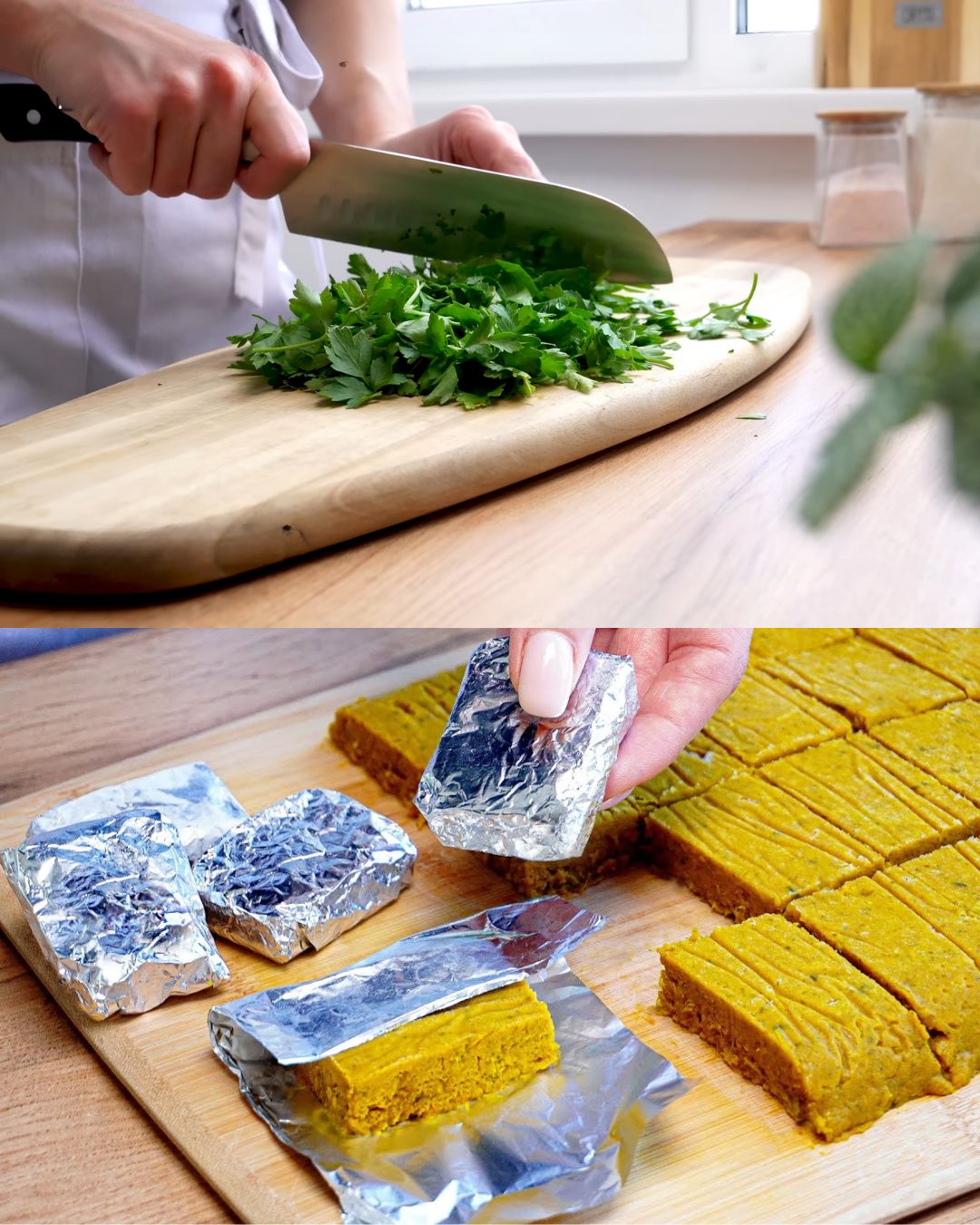Are you tired of the artificial flavors and chemicals in store-bought bouillon cubes? This homemade vegetable broth cube recipe will transform how you prepare broths and soups. Offering a natural, healthier alternative, these broth cubes are packed with fresh, wholesome flavors that elevate any dish. Whether you’re a seasoned chef or just starting in the kitchen, this guide will help you create flavorful vegetable broth cubes from scratch. Let’s dive into the process!
Full Recipe:
Recipe and Ingredients
Ingredients:
- 1 leek
- Olive oil
- 3 carrots
- 1 onion
- 2 garlic cloves
- 1 radish
- Celery (include the stalks for extra flavor)
- Parsley
- Salt (80 grams, approximately 5-6 tablespoons)
- Turmeric (10 grams, about 1 tablespoon)
Instructions:
- Prepare Your Vegetables:
- Start by washing and cleaning your vegetables thoroughly.
- Slice the leek, carrots, onion, radish, and celery into small pieces for even cooking.
- Mince the garlic cloves.
- Sauté the Vegetables:
- Heat a generous amount of olive oil in a large pot over medium heat.
- Add the chopped leek and sauté until it becomes soft and translucent.
- Continue by adding the sliced carrots, onion, garlic, radish, and celery.
- Stir the mixture frequently to ensure that the vegetables cook evenly and do not stick to the bottom of the pot.
- Add Flavor:
- Sprinkle in the salt and turmeric. These ingredients not only enhance the taste but also contribute a beautiful golden color and depth of flavor.
- Mix everything thoroughly to ensure that the seasoning is evenly distributed.
- Simmer the Broth:
- Cover the pot with a lid and let the mixture cook for about 20 minutes. This allows the flavors to meld together and the vegetables to soften.
- Blend the Mixture:
- After cooking, use a blender or immersion blender to puree the mixture until smooth. This step ensures a uniform texture and rich consistency in your broth.
- Chill and Set:
- Transfer the blended mixture to a container and place it in the refrigerator. Allow it to chill for at least 12 hours. This cooling period helps the flavors to develop further and makes the mixture easier to handle.
- Form the Broth Cubes:
- Once chilled, the mixture will solidify. Cut it into small cubes or portions according to your preference.
- Store Your Broth Cubes:
- Store the vegetable broth cubes in an airtight container or freezer bag. They can be kept in the freezer for several months, making them readily available for all your cooking needs.
Using Your Homemade Broth Cubes
These vegetable broth cubes are perfect for a wide range of dishes. Simply dissolve one or two cubes in hot water to create a flavorful broth for soups, stews, risottos, and more. They add a rich, natural taste without the need for artificial additives, making your meals healthier and more satisfying.
Nutritional Facts (per cube):
- Calories: ~25 kcal
- Fat: 0.5 g
- Carbohydrates: 5 g
- Protein: 1 g
- Fiber: 1 g
- Sodium: 200 mg (depending on the salt used)
Cooking Tips:
- Customize the Flavors: Feel free to add your favorite herbs like thyme, rosemary, or bay leaves for additional aroma and flavor.
- Low-Sodium Option: For a low-sodium version, reduce the salt and add more fresh herbs and spices to enhance the taste.
- Consistency Check: After blending, make sure the mixture is smooth to ensure even distribution when dissolved in water.
FAQs:
1. Can I use other vegetables in this recipe? Yes, you can customize the recipe by adding vegetables like bell peppers, zucchini, or mushrooms for different flavors.
2. How long do the cubes last in the freezer? The broth cubes can last up to 3-4 months in the freezer if stored in an airtight container or sealed freezer bag.
3. Can I use these cubes in non-vegetarian dishes? Absolutely! These vegetable broth cubes work well as a base for chicken, beef, or seafood soups and stews.
4. How many cubes should I use for broth? One cube is typically enough for 1 cup of water. Adjust the number of cubes based on the intensity of flavor you want.
Storage Tips:
- Freezer: Store the cubes in a single layer in an airtight container or freezer-safe bag. This will prevent them from sticking together.
- Refrigeration: If you plan on using the cubes within a week, you can keep them in an airtight container in the fridge.
- Labeling: Be sure to label the container with the date so you can track freshness.
Conclusion
Making your own vegetable broth cubes is not only a cost-effective way to enhance your cooking but also a great step towards a more natural and healthier diet. By using fresh vegetables and simple seasonings, you create a broth that’s free from chemicals and packed with genuine flavors. This recipe offers a versatile and practical solution for anyone looking to improve their culinary practices and enjoy the taste of homemade goodness. Say goodbye to store-bought bouillon cubes and embrace the art of making your own wholesome, delicious broth cubes. Your taste buds and your health will thank you!

